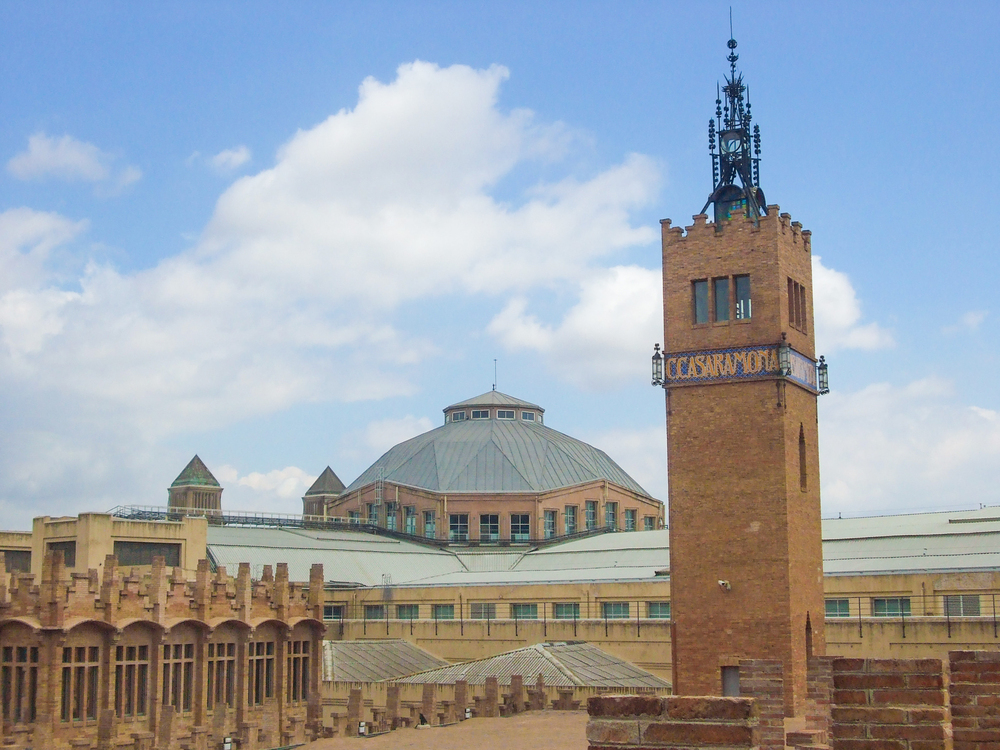Living in the neighborhood of Gracia has been and still is one of the dreams of many young people, students and bohemians.
The uniqueness of the neighborhood, with its narrow streets and its small-town appearance, captivates from the first moment. The bustling air, the commercial offer and the spirit of protest are other attractions of this area of Barcelona, which is becoming a tourist attraction.
[ OK Apartment Barcelona Video]
Gracia is always in fashion and that is perceived from the first moment. Its squares and small streets are a hive of people at any time of the day. From early in the morning, the Fontana Metro station becomes a meeting point for hundreds of local and foreign people. From there, groups of tourists set out for the recently restored house of the Carolinas.
house of the Carolinas
one of the main modernist buildings in the city. Others go up to the
Parc Güell
or go into the narrow streets to enjoy the atmosphere of the neighborhood, have a few beers in one of its squares or browse the stores of Gran de Gràcia.
[ Video of #0 ]
Visitors come from all over. Many of them stay in hotels in the center of Barcelona and reach the neighborhood on foot or by public transportation. The proximity to the famous Paseo de Gracia and the Eixample allows it. There is no need to take transportation, with a little bit of willingness to walk you can reach the neighborhood in less than half an hour.
Paseo de Gracia is precisely where a first class hotel offer is concentrated. Just visit the Iberostar.com website. Its new establishment on this emblematic promenade occupies a neoclassical building with more than 70 years of history. But one of its main attractions is on the rooftop, from where spectacular views of Barcelona can be seen.
A review of the history of Gràcia
The neighborhood of Gràcia began to take shape in the 14th century, when churches and monasteries began to be built outside the walls of Barcelona. One of the points chosen was the area of the “Barcelona plain”, and specifically the road that linked the center with the town of Sant Cugat. Around this road, which today is known as the carrer Gran de Gràcia, different religious orders settled and several farmhouses were built for agriculture. It was also the place chosen by numerous families of the high bourgeoisie to locate stately mansions and summer houses.
[Video by DIAEspaña]
During the 19th century, Gràcia lived a moment of geographical and industrial expansion. The lack of land in the area of the wall generated the search for spaces in which to install factories and Gràcia was one of the chosen destinations. Around this activity, mainly textile, a nucleus of workers was created that ended up settling in the neighborhood. Workers from the rest of the city who needed housing also went there. That was the germ of a social and labor activism that has been maintained over the centuries.
In 1850 Gràcia became an independent municipality. This gave rise to a popular expression that still endures today: for many older people, going to the city center is “going down to Barcelona”. At that time, Gràcia had 13,000 inhabitants, in 1877 there were already 33,000 and by the end of the 19th century the figure reached 62,000.
By 1880 Barcelona and Gràcia saw the need for annexation and projects of common interest were established. The urbanization of Paseo de Gracia established the definitive link between the two areas. Meanwhile, internal connection routes were created between the different areas of Gràcia and the first infrastructures and markets were built to supply the population: the Abacería market, in Travessera de Gràcia, and the Llibertat market near Plaça Gala Placídia. The definitive union came in 1897, after 47 years of autonomy.
A neighborhood with personality
The industrialization processes did not put an end to the rural character of the area. One of the activities that was maintained was the livestock trade, which concentrated the gypsy population around the Raspall square. Between the late nineteenth and mid-twentieth centuries, gypsies shared spaces with wealthy Indians recently arrived from Cuba. From the fusion of Caribbean rhythms and flamenco came the Catalan rumba, another hallmark of the neighborhood of Gràcia.
The passing of the years has not affected the personality of the neighborhood. Gracia maintains a lively and prolific associative and cultural activity and a strong sense of neighborhood autonomy. The urban layout of the old town has not been modified. The narrow streets and squares full of bars recall the character of this ancient village. Perhaps the biggest difference between past and present is the growing presence of foreign tourists, especially visible during the famous Festes de Gràcia.
More information:
Iberostar.com



